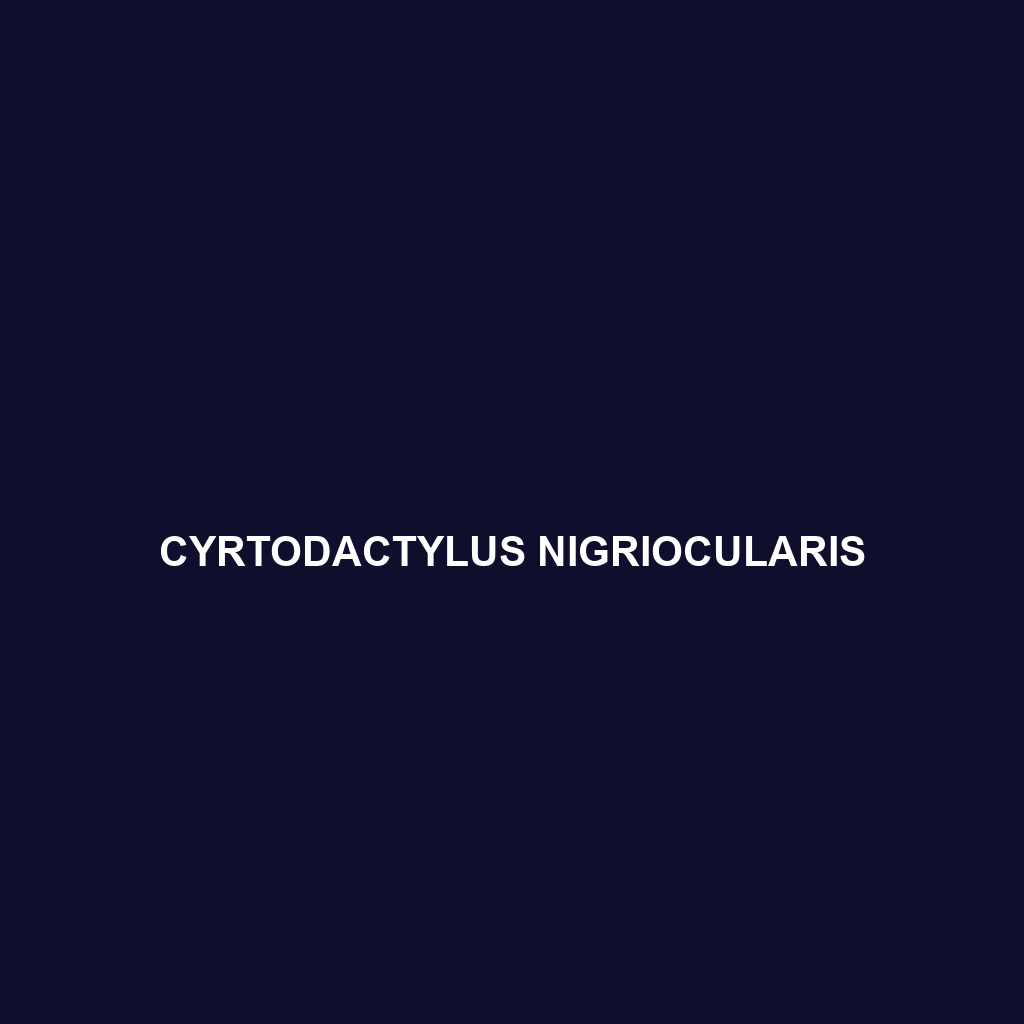Common Name: Cyrtodactylus nigriocularis
Scientific Name: Cyrtodactylus nigriocularis
Habitat:
Cyrtodactylus nigriocularis, commonly known as the black-eyed bent-toed gecko, is primarily found in the tropical regions of Southeast Asia. It inhabits forested areas and rocky outcrops in countries such as Malaysia and Indonesia, thriving in humid environments where it can find adequate shelter and food sources. These geckos prefer low-elevation tropical forests which provide a stable microclimate conducive to their survival.
Physical Characteristics:
This species exhibits a distinctive appearance, notable for its medium size, reaching lengths of up to 15 cm. Cyrtodactylus nigriocularis is characterized by its light brown to tan body, complemented by darker blotches that serve as excellent camouflage against the forest floor. The most striking feature is its large, dark eyes, which give insight into its name. The body shape is elongated with prehensile toes that assist in climbing and gripping onto surfaces.
Behavior:
Cyrtodactylus nigriocularis is primarily nocturnal, showcasing active behaviors during the night. They are known for their agility and speed, often seen climbing trees and rocks. These geckos are territorial and display assertive behaviors, particularly during mating season, where males can be observed performing courtship displays. Communicative sounds are also integral during interactions, particularly chattering and clicking.
Diet:
This species is insectivorous, primarily feeding on a diet consisting of various insects such as crickets, moths, and beetles. Cyrtodactylus nigriocularis employs a sit-and-wait strategy to catch prey, showcasing excellent camouflage that aids in ambush hunting. This feeding behavior is crucial for its survival, maintaining the ecological balance by controlling insect populations.
Reproduction:
Reproductive activity in Cyrtodactylus nigriocularis typically occurs during the wet season, which is around April to July. Females are known to lay two eggs per clutch in hidden crevices, providing safety from predators. The incubation period lasts approximately 60 to 90 days, with hatchlings emerging fully formed and independent, capable of fending for themselves shortly after birth.
Conservation Status:
Currently, Cyrtodactylus nigriocularis is classified as vulnerable due to habitat loss primarily caused by deforestation and urbanization. Efforts are underway to assess populations and implement conservation measures to protect this unique gecko and its habitat.
Interesting Facts:
One fascinating aspect of Cyrtodactylus nigriocularis is its ability to regenerate its tail, a defense mechanism against predators. This species exhibits remarkable adaptability to various microhabitats within their range, showcasing an evolutionary response to environmental changes.
Role in Ecosystem:
Cyrtodactylus nigriocularis plays a vital role in its ecosystem as both a predator and prey. By regulating insect populations, it contributes to controlling pest outbreaks. Additionally, it serves as a food source for larger predators, thus maintaining the food web dynamics within its habitat.
